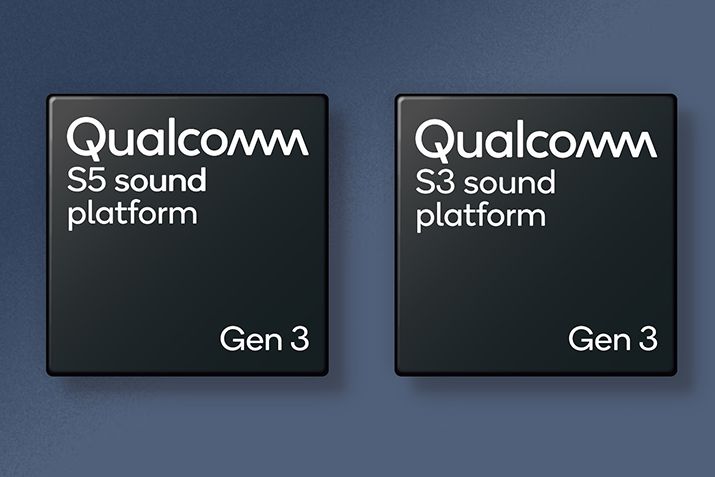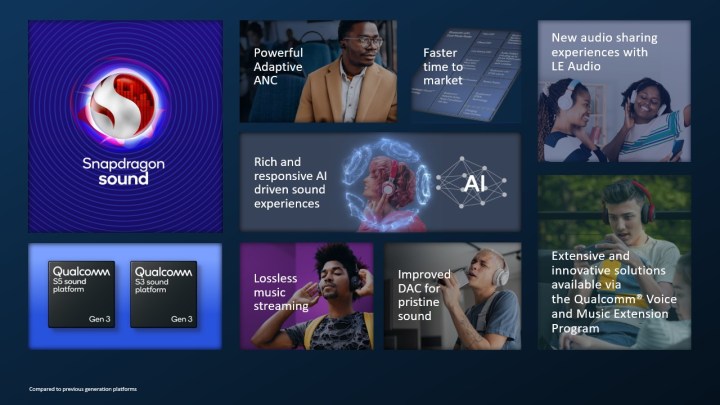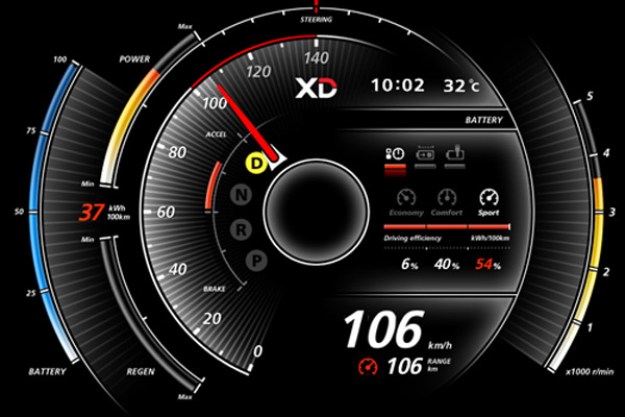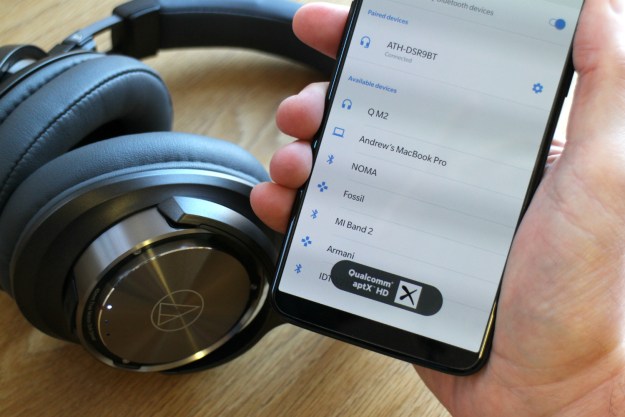
Qualcomm has announced its latest S3 and S5 Gen 3 Bluetooth chipsets for audio products like wireless earbuds, headphones, and speakers. Along with the usual improvements in performance, some of these chips break new ground in terms of audio quality, thanks to the addition of hi-res support to the company’s aptX Lossless Bluetooth codec.
Until now, aptX Lossless — which requires Qualcomm’s Snapdragon Sound technology on both sides of the wireless device equation — has been limited to CD-quality audio.
And while it may not reach the level of sampling frequency desired by the most ardent audiophiles, the latest iteration of aptX Lossless now reaches 24-bit/48kHz. By simply offering greater bit-depth and more frequent sampling than CD-quality (16-bit/44.1kHz), many observers consider 24/48 to be the entry-point for hi-res audio.
As the S3/S5 Gen 3 chips are just now becoming available to manufacturers, Qualcomm hasn’t announced any new products that use these chips. However, in the press release Qualcomm emailed to media outlets, Vivo’s general manager of its intelligent terminal development department, Youfei Wang, said that the smartphone maker is “excited to soon introduce the world’s first device powered by the Qualcomm S3 Gen 3 Sound platform.”

The S3 and S5 Gen 3 chips join the S7 and S7 Pro chips that Qualcomm launched in October 2023. The S7 chips also get 24/48 aptX Lossless and remain the recommended brains for ultra-premium wireless earbuds, headphones, and speakers, with the new S5 and S3 chips are targeted at premium and mid-tier devices, respectively.
The S3 Gen 3 family of chips are split into two categories: one group is aimed at wireless earbuds, while the other is geared toward wireless headphones and speakers. New features like LE Audio, Bluetooth Auracast, and Qualcomm Voice and Music Extension compatibility are available in both categories, as is hi-res aptX Lossless.
There’s only one model of the third-gen S5 chip, and it’s aimed at a wide variety of wireless audio products, including wireless earbuds, headphones, headsets, and speakers. It supports hi-res aptX Lossless when used with a compatible smartphone, and it features Qualcomm’s fourth-gen adaptive active noise cancellation (ANC) technology.
For companies that want to leverage the S5’s computational power, Qualcomm says the third-gen has three times more compute power and 50 times more on-device AI than its predecessor.
As excited as we are to see Qualcomm advance the state of the art when it comes to wireless audio, the usual caveats apply: regardless if a product sports the Qualcomm Snapdragon Sound brand or not, you need to do a very careful deep-dive into the specifications to make sure it supports a feature like hi-res aptX Lossless.
Qualcomm says its website can help folks find matching products based on features, but at the moment, there’s no specific filter for hi-res aptX Lossless. Hopefully that will change as new products enter the market.
Editors' Recommendations
- Earfun makes hi-res audio more accessible with affordable earbuds and DAC
- Tidal begins its rollout of hi-res lossless audio
- Bluetooth bandwidth set to double, opening a path for video and lossless audio
- $2,199 Hed Unity Wi-Fi headphones are the first to offer lossless hi-res audio
- The first wireless hi-res headphones with UWB will arrive in 2024




